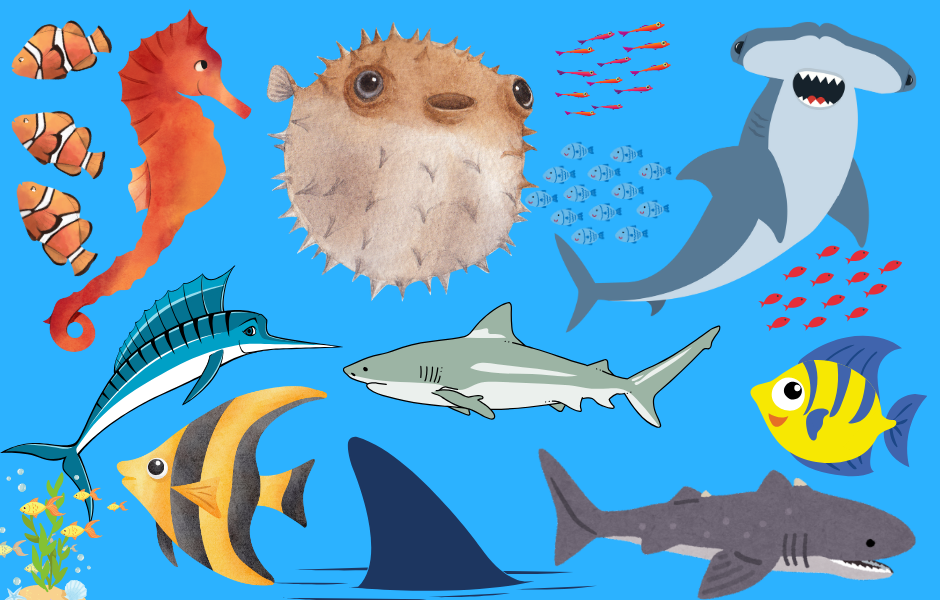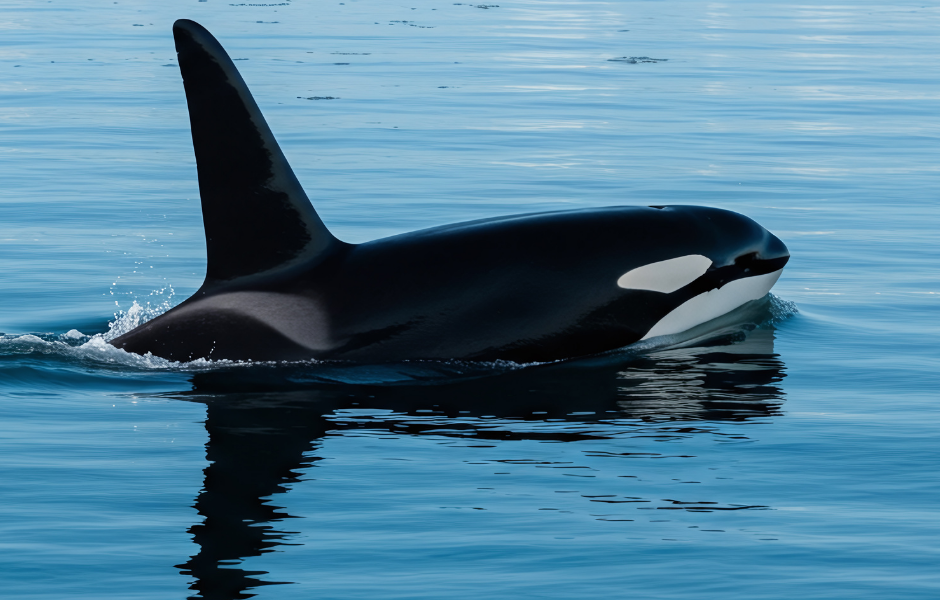
In this article What makes a fish a fish? you will discover loads about our underwater friends. Fish are some of the oldest animals on Earth. They’ve been swimming in oceans, rivers and lakes for over 500 million years! But what exactly makes a fish a fish? Let’s dive in and find out. Written by Mark Pulley, a teacher and writer who creates fun and informative news articles for English learners.
Life underwater
Fish are vertebrates, which means they have a backbone like mammals, birds, and reptiles. But unlike most other animals, fish live their whole lives in water. Their bodies are specially designed for swimming, with sleek shapes, strong tails, and fins to help them move and turn.
Most fish breathe using gills, which take oxygen out of the water. Gills are found on the sides of their heads and are one of the clearest signs you’re looking at a real fish.
Fish also have something called a lateral line, it’s like a special sense organ that runs along their sides and helps them feel movement and vibrations in the water.
Scales, slime and eggs
Fish are usually covered in shiny scales, which help protect them and make it easier to glide through water. Many fish also produce a slippery slime that helps them avoid infections and swim even faster.
Most fish lay eggs, though some (like certain sharks and rays) give birth to live young. There are over 34,000 species of fish, more than any other type of vertebrate!
Oceans are full of variety
There are three main groups of fish: bony fish (like cod and clownfish), cartilaginous fish (like sharks and rays), and jawless fish (like hagfish and lampreys), which are some of the weirdest animals in the ocean.
Fish come in many shapes and sizes. The smallest is the stout floater, a tiny fish from Indonesia that’s less than one centimetre long. The largest? That’s the whale shark, which can grow to over 12 metres!
Fish can be found in nearly every part of the world, from deep in the coldest oceans to warm, shallow rivers. Some fish can even live in both fresh and salty water!
Why fish matter
Fish are an important part of life on Earth. They help keep our oceans healthy, are part of many food chains, and have even been kept as pets for thousands of years.
Today, scientists and nature groups work hard to protect fish and their habitats. Overfishing, plastic pollution, and warming seas are all threats to fish, and we can help by keeping our oceans clean and supporting marine conservation efforts.

Article vocabulary list
- Vertebrates – animals with a backbone
- Gills – body parts fish use to breathe underwater
- Lateral line – a special line on fish that senses movement in the water
- Scales – hard, flat pieces that cover and protect a fish’s body
- Cartilaginous – made of cartilage, not bone (like a shark’s skeleton)
- Jawless fish – fish with no jaws, like hagfish
- Species – a group of living things that are alike and can have babies
- Conservation – protecting nature and animals for the future
Comprehension questions
Just click the plus (+) to see the answer
1. What is one main feature that shows a fish is a vertebrate?
A) It has wings
B) It has a backbone
C) It has fur
Answer: B) It has a backbone
2. What do fish use to breathe underwater?
A) Lungs
B) Blowholes
C) Gills
Answer: C) Gills
3. What is a fish’s lateral line used for?
A) Swimming in circles
B) Sensing movement and vibrations
C) Making bubbles
Answer: B) Sensing movement and vibrations
4. What is the largest fish in the world?
A) Great white shark
B) Whale shark
C) Blue whale
Answer: B) Whale shark
5. Which of these is a type of jawless fish?
A) Cod
B) Hagfish
C) Shark
Answer: B) Hagfish
6. What does the word ‘conservation’ mean?
A) Studying animals
B) Keeping animals in zoos
C) Protecting nature and animals
Answer: C) Protecting nature and animals

Mark is a writer and EFL teacher from England with eight years’ experience. He’s passionate about travel, sport (especially football), animals, nature, and history, and enjoys helping children explore the world through language and learning.




